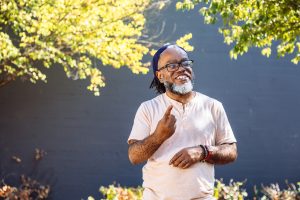Key Concepts
2 The Students We Serve
Though we often approach universal design with specific disabilities in mind, it is important to note that disability is not a static or singular state. Disability can be physical, cognitive, psychiatric, or sensory. Disability can be temporary, conditional, or permanent. And disability can be some or all of these things at once.
What barriers to learning might any of the following students encounter as they take your online course from introductory activities to final exam or project?

- A recent army veteran with noise-induced hearing loss who was diagnosed with ADHD in high school
- A new mother who battles post-partum depression in addition to an erratic sleep schedule
- A blind student who is grieving the death of her service dog and feeling isolated while she waits for a new dog to be trained to her needs
- A young student who has broken her dominant hand and has a concussion as a result of a recent bike accident
- A working father of four teenagers who has an essential tremor in his left hand, a condition which worsens with stress, heightened emotion, or physical exhaustion
- A dyslexic student who has a long commute to his full-time job
- A student born with cerebral palsy who has problems with movement, posture, and speech
- A student in her 60s with arthritis and low vision
These are just a few of the infinite constellations of disability. And, of course, there can be additional access barriers such as financial stresses or limited technology availability or know-how. But that’s where UDL comes into play: by building our courses to be more accessible from the start, we can reduce some of the barriers and frustration our students experience, saving their cognitive energy for learning.
As you work through this toolkit, note that we have highlighted a few of the many students that each approach can benefit in the “Who benefits?” box. See the sample below.
Who benefits?
The intro text will highlight students for whom the practice is essential. It will then identify others who may benefit such as:
- Students with x disability
- Students with x environment
- Students with x other barrier
